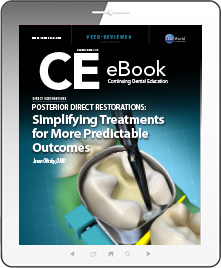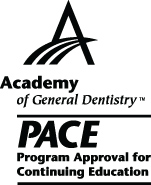CDEWorld > eBooks > Posterior Direct Restorations: Simplifying Treatments for More Predictable Outcomes


ADA CERP is a service of the American Dental Association to assist dental professionals in identifying quality providers of continuing dental education. ADA CERP does not approve or endorse individual courses or instructors, nor does it imply acceptance of credit house by boards of dentistry. Concerns or complaints about a CE provider may be directed to the provider or to ADA CERP at www.ada.org/cerp/

Approved PACE Program Provider. FAGD/MAGD credit. Approval does not imply acceptance by a state or provincial board of dentistry, or AGD endorsement. 1/1/2023 to 12/31/2028. ID # 209722.
eBook
Released: Monday, August 27, 2018
Expires: Tuesday, August 31, 2021
Posterior Direct Restorations: Simplifying Treatments for More Predictable Outcomes
By Jason Olitsky, DMD
Commercial Supporter: Ivoclar Vivadent
This article discusses techniques and products for posterior direct composites that facilitate successful restoration outcomes. The five types of composite resins are described: microfils, microhybrids, hybrids, packables, and flowables. This article also compares posterior amalgam restorations to composite resin restorations and addresses how to deal with potential postoperative sensitivity and posterior interproximal contacts. The option of bulk filling restorations is explored, along with the advantages and disadvantages of universal adhesives. Although composite resins in posterior restorations have some potential problems, they continue to increase in popularity due to their ease of use and esthetics. These materials are continuously being improved to become more simplified, predictable, and reliable.
LEARNING OBJECTIVES:
-
Review factors that influence form and function of posterior composite restorations.
-
Discuss techniques for creating successful posterior direct composite restorations.
-
Determine products that can facilitate success with posterior direct restorations.
About the Author
Jason Olitsky, DMD
Private Practice, Ponte Vedra Beach, Florida


